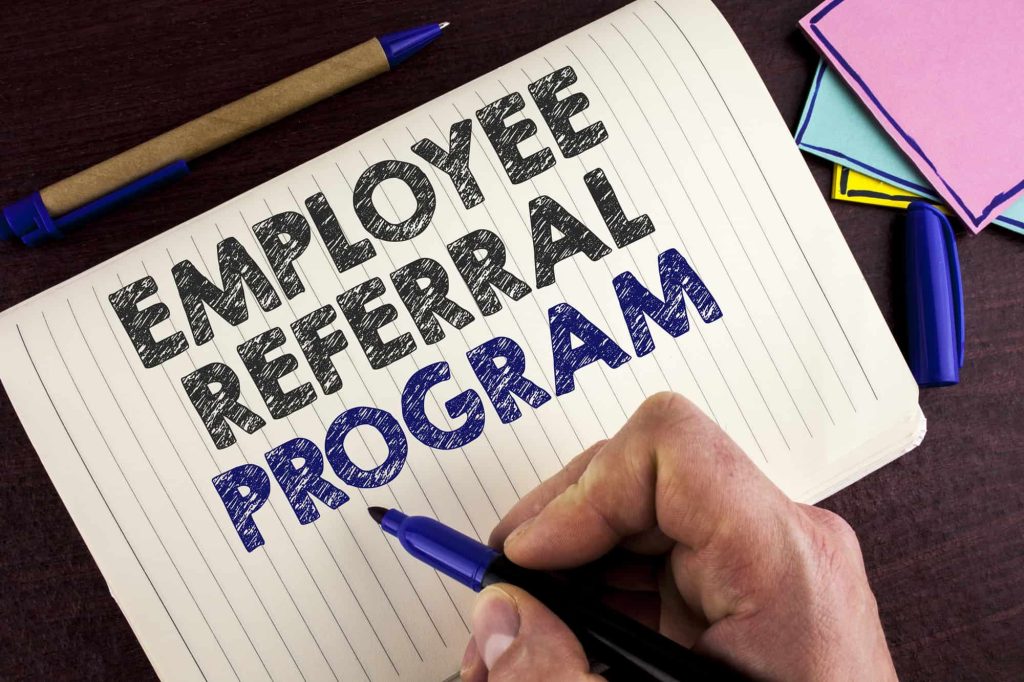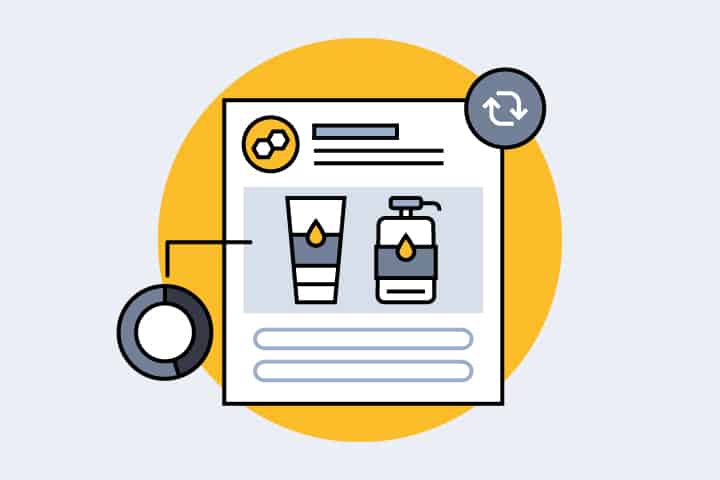In the quest for top talent, the path less trodden often leads to a goldmine of qualified candidates. This is where employee referral programs come into play, transforming the way companies think about talent acquisition. But what exactly are these programs, and why do they deserve a spot in your recruitment strategy? Let’s dive in.
Understanding Employee Referral Programs
At its core, an employee referral program is a structured system where employees recommend potential candidates for positions within their company. Think of it as your workforce doubling as talent scouts, each with their network of skilled professionals. Integrating this approach into your existing hiring strategies not only diversifies your recruitment channels but also taps into a pre-vetted pool of candidates.
But it’s not just about asking your employees to refer their friends or former colleagues. A truly effective program is seamlessly woven into your company’s recruitment framework, with clear guidelines, attractive incentives, and a straightforward nomination process. The goal? To make referring as easy and rewarding as possible for your employees.
The Significance of Employee Referral Programs
Why place such emphasis on employee referrals? The benefits are manifold, impacting everything from your company culture to your bottom line.
- Boost to Company Culture: When employees bring in candidates, they’re likely to recommend people who not only have the skills but also fit well with the company’s ethos. This natural vetting process fosters a cohesive workplace environment where new hires blend in smoothly.
- Recruitment Efficiency: Referrals can significantly cut down the time it takes to hire. According to a study by Jobvite, referrals lead to faster hires, with referred candidates 55% faster to hire compared with employees sourced through career sites.
- Enhanced Employee Engagement: There’s a certain pride that comes with having a say in who joins the team. Employees who participate in referral programs often feel more valued and invested in the company’s future.
- Retention Rates: Perhaps one of the most compelling reasons to adopt employee referral programs is their impact on retention. A report by Deloitte found that referred hires have a 42% retention rate after a year, compared to 32% for job board hires.
So, what makes these programs so effective? Let’s consider a few key elements:
- Pre-vetted Talent: Employees are likely to refer candidates who they believe will succeed in the role, ensuring a higher quality of applicants.
- Increased Engagement: Engaging your workforce in the recruitment process boosts morale and fosters a sense of ownership and community.
- Cost-Effectiveness: Reducing reliance on external recruitment agencies can lead to significant cost savings.
The Dual Benefits of Employee Referral Programs

The beauty of employee referral programs isn’t just in their ability to streamline the recruitment process. It’s in the win-win scenario they create for both employers and employees. Let’s unpack these benefits and see why companies and their workforces alike are all in on this strategy.
Advantages for Employers
Imagine your company as a great book. Now, what if your employees were the ones enthusiastically recommending this book to others? That’s exactly how a robust employee referral program boosts your employer branding. It’s a sign that your team doesn’t just work for you; they believe in where they work enough to refer others. As they say, actions speak louder than words, and this action speaks volumes.
Recruitment Quality
We’ve all heard the saying, “Birds of a feather flock together,” right? Well, it turns out there’s some truth to it in the professional world. Employees tend to know people like themselves – skilled, reliable, and hardworking. This peer-vetting process naturally enhances the quality of your recruitment pool. According to LinkedIn, 45% of referred employees stay with the company for four years or more, compared to 25% of hires through job boards. That’s not just a small improvement; it’s a game-changer.
Cost-effectiveness
Let’s talk numbers. Traditional hiring methods are like fishing in the ocean with a net; you spend a lot and catch a lot, but not all of it’s what you want. Referral programs, on the other hand, are more like spearfishing—you aim for what you want, making it much more cost-effective. The HR Technologist notes that the average cost per hire can drop by $3,000 or more when using employee referrals. That’s a lot of savings that can be redirected to, say, improving workplace facilities or funding team-building activities.
Advantages for Employees
When an employee’s referral gets hired, it’s not just a professional win; it’s a personal one. They’ve brought someone into the fold whom they trust and respect, which can only strengthen workplace dynamics. These referrals often share common ground, making it easier for them to integrate into the team and contribute to a positive work environment.
Morale Boosts
Who doesn’t love a pat on the back or an extra something in their paycheck? Recognizing employees for successful referrals does wonders for morale. It’s a tangible way to say, “We value your input and trust your judgment.” This recognition can take many forms, from bonuses to extra vacation days, and each serves as a motivation booster, encouraging employees to stay engaged and proactive.
Rewards for Referrals
Here’s where the fun part comes in for employees – the rewards. While the satisfaction of enhancing their work environment is significant, tangible rewards add an extra layer of incentive. These can vary widely, from cash bonuses and gift cards to more creative rewards like extra vacation days or even trips. The key is making the rewards enticing enough to motivate your team to participate actively. Remember, the goal is to make everyone feel like they’re part of the company’s success story.
- Example: At Google, referral bonuses can go up to $4,000, depending on the position filled. That’s not just pocket change; it’s a significant incentive to engage in the referral process.
Best Practices for Maximizing the Impact of Your Employee Referral Program
Creating a robust employee referral program is like planting a garden. You need the right seeds (employees), fertile soil (the work environment), and consistent care (recognition and rewards). But how do you ensure your garden thrives? Let’s explore some best practices that can help your referral program bloom.
Structuring Your Referral Program for Success
First things first, clarity is king. Your referral program should have guidelines as clear as a summer’s day. What are the rewards? Who is eligible to participate? How should referrals be submitted? Answering these questions upfront can prevent any confusion down the line. But don’t just make it clear; make it inclusive. A great program welcomes referrals for all levels of positions, from the mailroom to the boardroom, and values diversity. This inclusivity not only broadens the talent pool but also enhances your company culture.
Emphasizing Diversity
Speaking of diversity, did you know that companies in the top quartile for racial and ethnic diversity are 35% more likely to have financial returns above their respective national industry medians? (McKinsey & Company). Encourage your employees to think outside their immediate circles. This not only enriches your team but also brings a wealth of perspectives that can drive innovation.
Engagement and Recognition Strategies
Keep the lines of communication open. When an employee makes a referral, acknowledge it promptly. If the referral is successful, let the referrer (and potentially the whole company) know. This feedback loop creates a positive experience for everyone involved. Moreover, it encourages others to participate, seeing that their contributions are valued and recognized.
Rewarding Top Performers
- Recognition goes a long way, but tangible rewards can take your referral program to the next level. Here are a few ideas:
- A bonus for every successful hire.
- Extra vacation days for multiple successful referrals.
- A special year-end reward for the top referrer.
Consider tiered rewards to keep employees engaged and motivated throughout the year. And remember, recognition doesn’t always have to be monetary. A public shout-out in a company meeting or feature in the company newsletter can also boost morale.
A Few Parting Tips
- Make the referral process as easy as possible. The less friction, the better.
- Regularly review and adjust your program based on feedback and results. What works today might not work as well tomorrow.
- Celebrate diversity in your referral program. Encourage employees to think broadly about who might be a great fit for your organization.
Leveraging Referral Rewards to Enhance Your Business and Employee Experience
In the world of employee referral programs, the magic ingredient often boils down to the rewards. After all, who doesn’t like a little thank-you for a job well done? But how do you ensure that your rewards system isn’t just good, but great? Let’s unwrap the layers to crafting an attractive referral rewards system and the best practices that will make your program a shining star in the corporate galaxy.
Crafting an Attractive Referral Rewards System
Imagine walking into a candy store where you can only find one type of candy. Sounds boring, right? The same principle applies to referral rewards. Variety isn’t just the spice of life; it’s the cornerstone of a compelling referral program. But how do you incorporate this variety effectively?
- Offer Choices: Some folks might love a cash bonus, while others prefer extra vacation days. Giving options allows your employees to choose what they value most.
- Tailor to Your Workforce: Understand the demographics of your employees. Younger employees might appreciate tech gadgets or experiences, while others might prefer contributions to retirement savings.
A well-rounded rewards system speaks volumes about how much a company values its employees’ diverse preferences.
Examples to Inspire:
- A tech company offered a choice between the latest smartphone or a weekend getaway for successful referrals, leading to a 30% increase in referral hires within a year.
- A marketing firm introduced charity donations as part of their rewards, allowing employees to feel a sense of community contribution alongside personal gain.
Best Practices for Referral Rewards Programs
The path to a stellar referral program is paved with honesty and the willingness to evolve. Transparency about how the referral process works, how decisions are made, and what rewards are given, sets a clear expectation and builds trust within your team.
- Keep it Clear: Make sure the criteria for receiving rewards are well-documented and easily accessible to all employees.
- Feedback Loops: Encourage feedback on the referral program and be prepared to make adjustments. This could mean tweaking the reward offerings or simplifying the referral submission process.
Continuous Improvement:
- Regularly survey your employees about the referral program. What do they like? What could be better?
- Analyze the performance of the referral program. Are certain rewards more motivating than others? Is there a seasonal trend in referrals?
Case Studies: Success Stories of Companies Excelling with Referral Programs

When it comes to crafting an effective employee referral program, learning from the best can provide invaluable insights. Several leading companies have set the gold standard for how referral programs can not only enhance recruitment but also bolster company culture and employee satisfaction. Let’s take a closer look at some of these success stories.
Learning from the Best: How Top Companies Utilize Referral Programs
- Intel has long been recognized for its innovative approach to employee referrals, emphasizing not just the quantity but the quality of hires. Their program includes comprehensive feedback mechanisms, allowing them to continuously refine and improve their process.
- Google, known for its creative work environment, applies the same innovation to its referral program. Google’s strategy focuses on making the referral process as simple and user-friendly as possible, coupled with significant rewards for successful referrals.
- DigitalOcean takes a unique approach by fostering a strong sense of community and belonging among its employees, which naturally encourages referrals. They highlight the personal impact each employee can have on the company’s growth, adding a meaningful layer to the referral process.
- Booking.com leverages its global presence by encouraging cross-regional referrals, thus ensuring a diverse and versatile talent pool. Their program is designed to be inclusive, recognizing the contributions of employees from all parts of the company.
Innovative Referral Program Features and Rewards
These companies have not only mastered the basics of a referral program but have also introduced innovative features and rewards to keep their employees engaged and motivated. Here are some standout examples:
- Tiered Reward Systems: Instead of a one-size-fits-all reward, companies like Google have implemented tiered rewards, increasing the stakes and excitement around making referrals.
- Celebrating Diversity: Intel’s referral program includes bonuses for referrals of underrepresented groups in tech, aligning with their commitment to diversity and inclusion.
- Experience-based Rewards: DigitalOcean and Booking.com have experimented with offering unique experiences, such as exclusive team events or travel opportunities, as rewards for successful referrals. This not only incentivizes employees but also contributes to team bonding and morale.
- Feedback and Recognition: All these companies emphasize the importance of acknowledging and rewarding the effort that goes into a referral, regardless of the outcome. This could be through public recognition, small tokens of appreciation, or simply a thank you note.
Engagement Beyond Rewards:
- Regular communication about the program’s impact and success stories.
- Encouragement of employee participation in the recruitment process, such as involvement in interviews or onboarding.
By examining these case studies, it becomes evident that the most successful referral programs are those that align with the company’s broader goals and values. Whether it’s fostering diversity, encouraging innovation, or building a community, these programs prove that when done right, referrals can be a powerful tool for both recruitment and employee engagement.
Frequently Asked Questions About Employee Referral Programs and Referral Rewards
Navigating the waters of employee referral programs can sometimes feel like you’re trying to solve a Rubik’s Cube—complicated at first glance, but quite rewarding once you get the hang of it. Let’s tackle some of the most common questions and shed light on how to make your referral program a roaring success.
Common Questions and Expert Answers
“How do I get my team excited about our referral program?”
Getting your team on board is crucial. Transparency about the program’s benefits and potential rewards is a great start. Share success stories within your company or industry-wide examples where referral programs have led to significant hires. Remember, a well-informed team is an engaged team.
“What makes a referral reward enticing?”
Variety is the spice of life, and this holds true for referral rewards too. While cash bonuses are always welcome, consider also offering:
- Extra vacation days
- Experiences (like a dinner out or concert tickets)
- Tech gadgets or professional development opportunities These options allow employees to choose rewards that are meaningful to them, increasing the program’s attractiveness.
“How often should we evaluate our referral program?”
Regular check-ins are key. Aim for a quarterly review of your program’s performance. This doesn’t mean you need to overhaul the program each time, but minor adjustments based on feedback can significantly enhance its effectiveness.
Advanced Tips for Program Success
For instance, referral software that integrates with your HR Management system can streamline the entire process, from submission to hire. In the digital age, technology can be your best friend. Utilize platforms and software that simplify the referral process for your employees. Features like tracking the status of a referral or automating reward distribution can make your program more user-friendly and efficient. For instance, referral software that integrates with your HR system can streamline the entire process, from submission to hire.
Long-term Strategies
For a referral program to truly thrive, it needs to be more than just a one-off campaign. Consider these long-term strategies:
- Cultivate a culture that values and encourages referrals regularly, not just when there’s a hiring push.
- Keep the conversation going by celebrating every successful hire publicly, showing appreciation for the referrer, and continuously highlighting the program’s impact on the company.
- Offer ongoing training or workshops on how to identify potential candidates within their networks, emphasizing diversity and inclusion.
Leveraging Technology to Enhance Employee Referral and Reward Programs
In today’s fast-paced world, where technology sits at the heart of many business operations, leveraging it to enhance your employee referral and reward programs can be a game-changer. But how exactly can technology transform these programs from good to great? Let’s dive into the digital realm and explore the innovative solutions and strategies that can amplify your efforts.
Innovative Software Solutions for Managing Referral Programs
The right technology can streamline and simplify the referral process, making it easier for employees to participate and for HR to manage. Here are some ways leading technologies and platforms are changing the game:
- Automated Tracking and Management: Platforms like Jobvite and Zoho Recruit offer tools that automate the referral process, from submission to hire, ensuring no referral slips through the cracks.
- Integration with HR Systems: Seamless integration with your existing HR systems means referrals can be easily tracked alongside other recruitment efforts. This integration allows for a holistic view of your hiring process and the impact of referrals on your overall strategy.
Benefits of Technology Integration:
- Reduces administrative burden on HR and hiring teams
- Provides real-time data on the effectiveness of your referral program
- Enhances the employee experience by simplifying the referral submission process
The Role of Social Media and Digital Networking in Referrals
Social media and digital networking platforms have opened up new avenues for employee referrals, making it easier than ever to reach potential candidates. Here’s how you can leverage these tools:
- Social Media Strategies: Encourage your employees to share job openings on their social media profiles. Platforms like LinkedIn allow for easy sharing of professional opportunities within one’s network.
- Creating Shareable Content: Develop eye-catching job ads or graphics that employees can share on social media. These should be informative and engaging, making them more likely to be shared.
Tips for Maximizing Social Media Impact:
- Encourage employees to add a personal note or story when sharing job openings, as personal endorsements can significantly increase engagement.
- Use hashtags related to your industry or specific roles to increase visibility beyond your immediate network.
Measuring the Success of Your Referral Program: Key Metrics and Analytics

In the realm of employee referral programs, the mantra “What gets measured gets managed” couldn’t ring truer. Understanding the performance of your referral program is pivotal, not just for its immediate success, but for its long-term sustainability. Let’s delve into the essential metrics that shed light on performance and explore how analytics can catalyze program improvements.
Essential Metrics to Track Program Performance
Navigating the success of your referral program can feel like steering a ship through foggy waters without the right metrics. Here are the lighthouses:
- Referral Rate: The percentage of your workforce participating in the program. A healthy rate indicates good engagement and awareness among your employees.
- Conversion Rate: How many referrals turn into actual hires? This metric gives insight into the quality of referrals and the effectiveness of your selection process.
- Time-to-Hire: Compare the time it takes to hire referred candidates versus other sources. Generally, referrals speed up the hiring process due to pre-existing trust and compatibility.
- Retention Rate: The stickiness factor—do your referred hires stay longer than others? A higher retention rate can signal quality hires and a good match with company culture.
Benchmarking and Comparative Analysis
- Look at industry benchmarks to set realistic goals for your program.
- Perform comparative analysis periodically to gauge improvements or identify areas needing attention.
Using Analytics to Drive Referral Program Improvement
With the right tools and a bit of detective work, diving into your program’s data can unveil patterns and opportunities you might not have seen before. For instance, if you notice a high conversion rate but low participation, it might be time to ramp up your communication efforts or reevaluate the incentives offered.
Case Studies on Analytics-Driven Refinements
- A retail company noticed through analytics that referrals had a significantly higher retention rate compared to other sourcing methods. They doubled down on this insight by increasing the reward for successful referrals, which led to a 40% increase in referral hires.
- A tech startup used analytics to identify that most successful referrals came from a particular department. They then organized a workshop for other departments to share best practices and saw a 25% uptick in quality referrals across the board.
Bullets to Remember:
- Track key metrics regularly for ongoing insight.
- Use analytics to tailor your referral program’s strategy.
- Don’t shy away from experimenting based on data-driven insights.
Transforming Your Business with Strategic Referral Programs
Referral programs aren’t just a tool for recruitment; they’re a strategy for growth, innovation, and competitive advantage. But how do you launch or revitalize your referral program to ensure it delivers these benefits? And what future trends should you be aware of to keep your program relevant? Let’s explore.
Steps to Launch or Revamp Your Referral Program
The first step in launching or revamping your referral program is to set clear, measurable goals. What do you hope to achieve? Is it more qualified candidates, faster hiring times, or improved employee retention? Once your goals are set, develop a strategy that aligns with your company’s broader objectives. This includes deciding on the structure of the program, the rewards, and how you’ll promote it to your employees.
Implementation Tips:
- Communicate Clearly: Make sure your team understands how the referral program works and the benefits of participating. Transparency is key to building trust and enthusiasm.
- Make It Easy: The simpler it is to refer someone, the more likely your employees will do it. Use technology to streamline the process.
- Recognize and Reward Quickly: Quick recognition and rewarding of successful referrals encourage ongoing participation.
Key Points to Remember:
- Define clear metrics for success.
- Regularly review and adjust the program based on performance data.
- Celebrate successes to maintain engagement and momentum.
Future Trends in Employee Referral Programs and Referral Rewards
The future of employee referral programs is bright and bustling with innovation. Here are a few predictions on how these programs might evolve:
- Increased Use of Technology: Advances in HR technology will make referral programs more efficient and user-friendly. Think AI-powered matching systems that can predict candidate fit based on existing employee profiles.
- Greater Emphasis on Diversity: There’s a growing recognition of the role referral programs can play in promoting diversity and inclusion. Expect to see more programs explicitly designed to attract diverse candidates.
- Integration with Employer Branding: Referral programs will become a key part of employer branding strategies, showcasing a company’s culture and values to potential candidates.
Adapting to Workforce Changes:
- Remote Work: With the rise of remote work, referral programs will need to adapt to a dispersed workforce. This might involve virtual rewards or recognition ceremonies.
- Gig Economy: As the gig economy grows, companies might start referral programs for temporary or freelance positions, not just permanent roles.
The landscape of work is changing, and so too must our strategies for finding and retaining the best talent. Employee referral programs, when strategically designed and thoughtfully implemented, can be a powerful tool in this endeavor. By staying ahead of trends and continually refining your program, you can ensure that your referral strategy not only serves your immediate hiring needs but also contributes to the long-term success and resilience of your business.
In the end, the strength of your referral program lies in its ability to engage your most valuable resource—your existing employees. As we look to the future, remember that the best referral programs are those that evolve with your workforce, leveraging new technologies and insights to create a more connected, inclusive, and dynamic workplace.


Leave a Reply